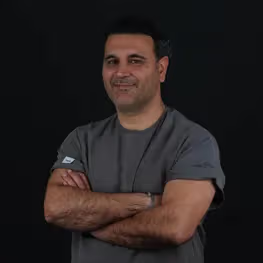There are several types of dental implants available, each suited to different patient needs, jawbone conditions, and treatment goals. Common examples include endosteal implants, which are placed directly into the jawbone and are the most widely used, and subperiosteal implants, which sit on top of the jawbone under the gums for patients with insufficient bone height. For severe upper jaw bone loss, zygomatic implants anchor in the cheekbone as a specialized alternative. Dental implant options also range from single tooth implants for individual tooth replacement to implant-supported bridgework or implant-supported dentures (including removable implant overdentures) for multiple missing teeth. Full-arch restoration can be achieved with techniques like All-on-Four, which secures an entire set of teeth on four implants. In rare cases, transosteal implants that pass through the jawbone are considered. These diverse implant options ensure that treatment can be tailored to each patient’s unique situation, restoring comfort and confidence in their smile.
Implants refer to the devices embedded into certain parts of the body to improve, restore, or modify a person’s appearance and way of living. Implants come in many forms and are designed for specific parts of the human framework such as the breasts, spinal column, teeth, bones, heart, skull, and many more.One of these implants is dedicated to oral purposes known as Dental implants. Dental implants are medical apparatus fashioned for human teeth alone. They are normally placed into the jaw to reimpose the teeth’s capability to chew and to restore its natural dental appearance. There are various types of dental implants to choose from depending on the kind of dental need that a person has. Most dental patients come with distinct needs which directly affects the type of dental implant that is appropriate for them. Losing a tooth or some teeth often leads to various complications such as weakened bones, defective speech, and irregularities in the chewing manner. These complications inevitably boil down to dental pain and lack of confidence. However, these complications caused by losing a tooth have been resolved over the years. Thanks to Dental implants. There are several benefits that dental implants bring to people with dental needs. Some of these benefits include, restoration of a person’s ability to chew, reimposition of one’s dental appearance, prevention of the jawbone from shrinking brought by bone loss, keeping the health of the adjacent gums and bones, keeping the nearby teeth firm and most especially enhancing a person’s way of life.
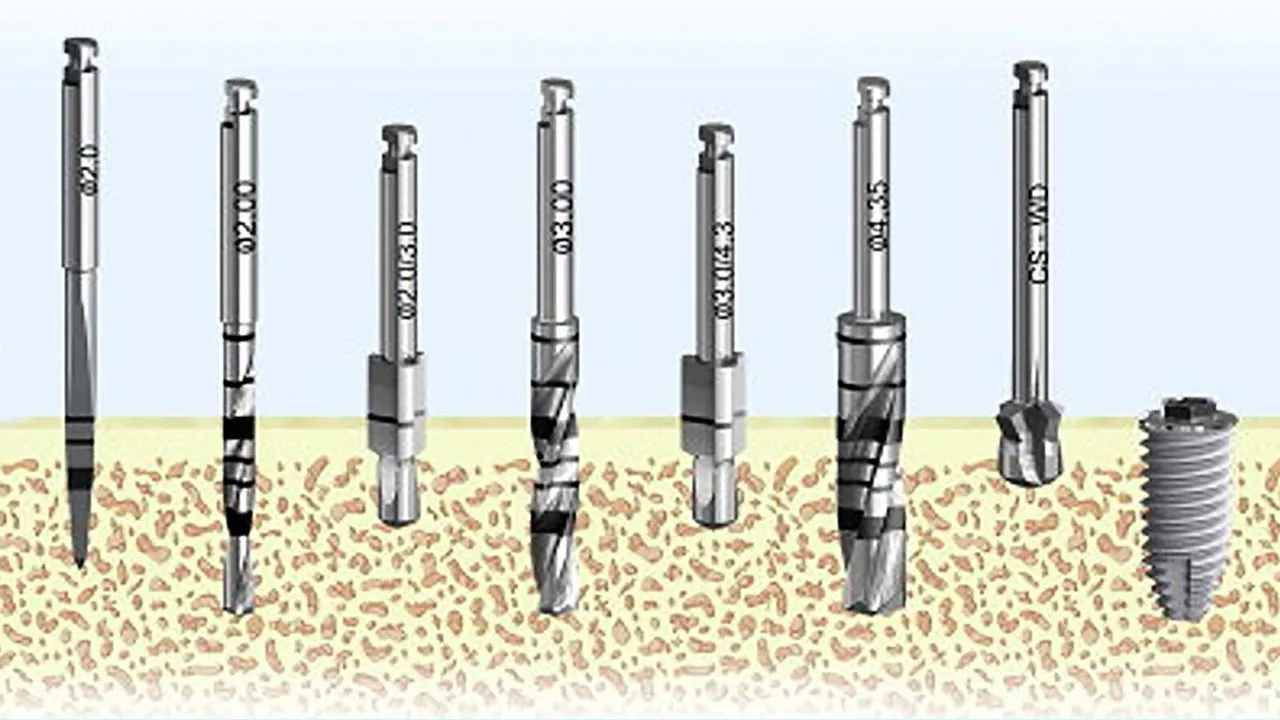 Some of the types of dental implants are listed below.
Some of the types of dental implants are listed below.
1. Endosteal
The Endosteal implant is the kind of dental implant which is preferred by most dental patients. It is composed of titanium and looks similar to screws, cylinders, and blades. Endosteal literally pertains to being located within the bone or cartilage. They are drilled through the jawbone area to serve as an artificial root for the tooth. They are intentionally protruded through the gum to clutch the tooth in place. A post is connected to the dental device where the false tooth is anchored. The endosteal implant is normally categorised in two types namely, Cylinder implants and Blade implants. Cylinder endosteal implants are the most customary type of endosteal which is made up of titanium screws. The Blade endosteal implants on the other hand, are thin and flat titanium pieces utilised by dentists when the alveolar area has shrivelled. The difference of endosteal implant among other grafts is that the false tooth does not directly connect to the endosteal implant. They are instead joined to the post anchored to the implant device. Dental patients are not the ones who choose which implants must be placed on their mouth. The selection of dental implants is solely determined by professional dentists and oral surgeons. There are criterias which lead to the recommendation for the placement of endosteal implant. Some of these criterias must include, good general health, good oral health, healthy gum tissue, a totally grown jawbone, sufficient jawbone area, and a clean history of tobacco products. Endosteal implants are the preferred solution for a lost or removed tooth. The artificial tooth used in endosteal implantation is removable whenever situations require. It is fixable as well which means that the tooth is allowed to be repaired or replaced when it is damaged.
The substances used in endosseous dental implants are Titanium and titanium alloy. These are the elements that enable the implants to osseointegrate to the jawbone. Osseointegration is the method by which the bone grows with the metal implant. The oxide content present in the titanium disposes biological molecules allowing the bone to grow closely to the facet of the implant. The endosseous implant procedure makes use of chemicals and drugs during the procedure to promote comfort and safety for the dental patients. These drugs include Anaesthetic, Antibiotic, and healing agents like PRP or Platelet-rich Plasma. Anaesthetics are applied to the affected area in order to reduce pain during the operation. Most dentists prefer Lidocaine as an anaesthetic because it is available in most drugstores and affordable compared to other anaesthetic drugs.Another drug used in the procedure is Antibiotics. Antibiotics are known to fend off infection from the wound. Materials for bone grafting is used as well when the jawbone is weak and unable to hold up the dental graft. Bone grafting substances strengthens the bone and makes the foundation of the implant firm. Healing substances are applied to the dental wound at the same time to promote faster and effective healing. Platelet-Rich Plasma or PRP is commonly used by dentists and medical professionals as a healing agent. The success rate of using endosteal implants to replace loose teeth is quite lofty. Researches show that the application of endosteal devices rockets to 95%. Its survival period is able to reach 5 years with a 98% guaranteed rate. Nevertheless, the success of the employment of endosteal implants truly depends on how the patient follows the recommended steps after the procedure. Dental patients must act in accordance with proper hygiene habits and prioritise overall health. The cost of the whole endosseous implant procedure varies with several factors like the number of implants used, the difficulty of the patient’s case, and the coverage of the dental insurance that the patient has. The average cost of the Endosteal implant ranges from £837.06 to £2511.19 for every single tooth.
2. Subperiosteal
The Subperiosteal Implant is the type of implant used for patients with weaker jawbone to support metal pieces. Subperiosteal in general is defined as the loss of bone mass occurring beneath the periosteum. Subperiosteal implants are made up of titanium as well, but it looks different from endosteal implants. The difference that they have towards other implants is that it is not drilled into the jawbone but rather attached. The subperiosteal implant rests on the jawbone beneath the gum area. It is characterised with metal frames instead of screws and blades. The metal frames consist of a number of small posts where the topmost dental pieces like the cap, denture, or bridge are essentially placed above. The frames of the subperiosteal implant are fashioned according to the specific shape of the patient’s jawbone. The implant is secured firmly in place as the gum heals around the metal frame. An artificial tooth is eventually placed on top of the metal posts that are placed above the gum’s surface. The ideal candidates for a subperiosteal implant are the senile and diabetic people. A subperiosteal implant partnered with a denture on top of it is best to use for senile citizens compared to removable dentures alone because it has a stronger hold and looks tidier. Subperiosteal implants are not removable unlike Endosteal implants. However, dentists and surgeons are capable of detaching it through a surgery which takes a longer period to recuperate. The patient must be able to have a thorough discussion with a professional dentist about the treatment concerns of the dental implant before deciding which implant to use.
The subperiosteal implant procedure uses the following chemicals and drugs, local anaesthetic, antibiotic, sedatives, and pain medications. Local Anesthesia is a type of medicine used to prevent the patient from feeling pain and discomfort during the procedure. Antibiotics are helpful drugs to sweep off infection from any open wound. Sedatives are powerful drugs usually injected to patients who are undergoing operations. They are used to calm patients who are tense and anxious about the procedure. Sedatives help them relax and sometimes lead them to fall asleep. Pain medications are vital drugs given to patients after the procedure to help manage discomfort during the recuperation period. The success rate of the subperiosteal implant procedure is relatively high. The rating ranges from 85% to 95%, according to relevant studies. However, regardless of the high success rate, patients are reminded that dental procedures carry some sort of complications as well just like any other operations. The cost of the whole process of subperiosteal implantation depends on some factors such as the difficulty of the patient’s case, the number of implants being used, and the patient’s insurance coverage. The average cost of the Subperiosteal implant per tooth is evidently higher than the Endosteal implant because it is more complicated and the metal frames are custom-made. The cost of Subperiosteal implant ranges from £2512.93 to £5025.86. The total cost of the procedure is expected to soar when multiple implants are used.
3. Zygomatic
The Zygomatic implant is a more advanced dental implant approach normally made up of titanium which is specifically treated to resist corrosion. It consists of long narrow screws and hollow short posts or abutments. The zygomatic implant is usually fixed from the upper jaw or maxilla to a person’s zygomatic arch or commonly known as the cheekbone. It is primarily used as a support to dental prosthetics like bridges and dentures when a person’s jaw is not sturdy. The most common structure of the zygomatic implant is characterised by two long narrow screws connected to the zygomatic arch on both cheeks.The zygomatic implants are used as an effective solution for atrophic edentulous maxilla and other maxillectomy . The atrophic edentulous maxilla is a condition wherein the upper jaw or maxilla shrinks and becomes thin after the event of subsequent tooth loss. It leads to further issues like difficulty in eating and speaking, gradual changes in facial appearance and lowered support for the dentition in the upper jaw. Problems like these are recommended to undergo the zygomatic implant procedure.
The zygomatic implants are removable when deemed necessary which is done through an operating procedure. There are situations when the implant needs to be removed, although it is considered as a life-long answer for missing teeth. Dental patients are advised to have a clear discussion with a dental professional regarding dental implant, its pros and cons and its potential complications. The procedure for zygomatic implants uses some chemicals and drugs to promote safety, efficacy, and comfort. Some of these drugs include local anaesthesia, the sedative, and prescribed medications. Local anaesthesia is injected to the patient before the start of the operation to desensitise the area where the implant is to be positioned. The dentist uses sedatives to calm the patient during the surgery. Lastly, a patient is prescribed medicines after the operation to help them manage discomfort and pain during the healing stage. The success rate of zygomatic implant procedure reaches to 95% according to recent studies. Nevertheless, the success of the Zygomatic implant is affected by various factors. Some of these factors include the patient’s overall health, the quality of the implant, and the surgical technique used in positioning the implant. The cost of the whole process of Zygomatic implant is relatively higher than with endosteal and subperiosteal. The amount ranges from £6691.04 to £20909.51 or more if the case is much more complicated.
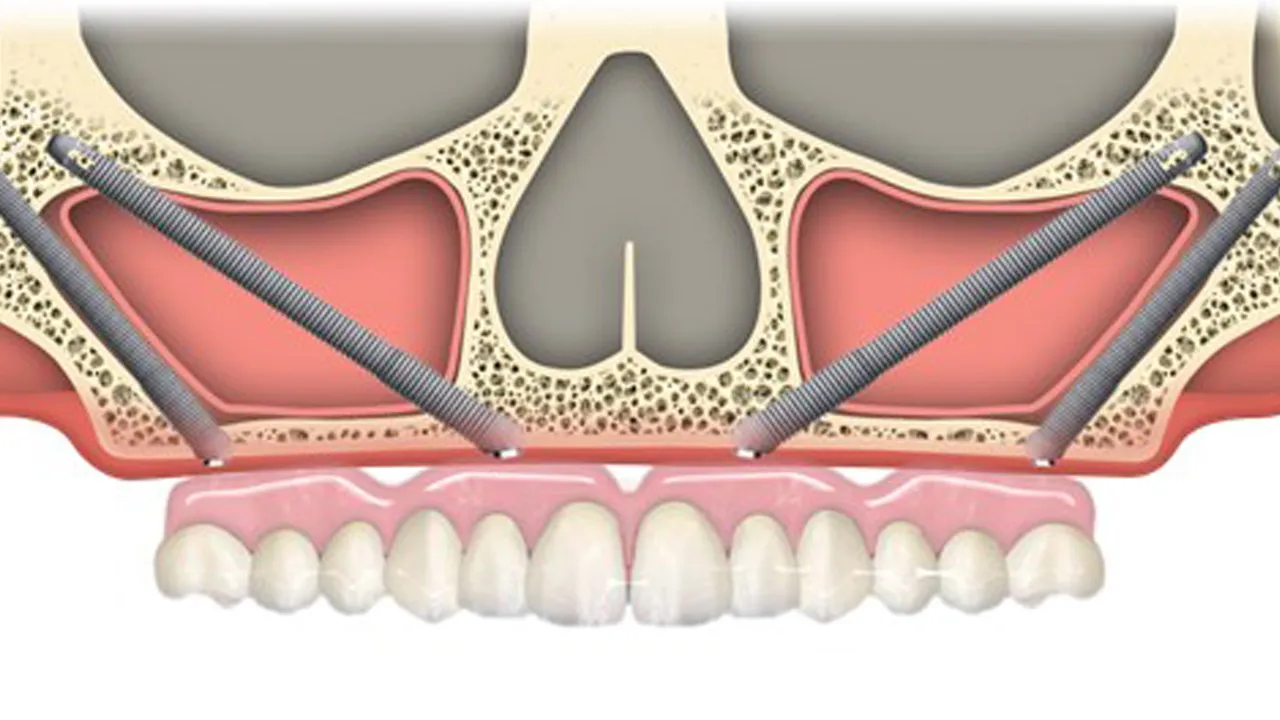
4. Single Tooth Implants
Single tooth implants are dental devices used to replace lost teeth with artificial ones. It is a kind of dental implant that solely works on a single tooth. It is made up of titanium and consists of parts such as titanium post, abutment, and the crown or the artificial tooth. The process for single tooth implant is a lot simpler compared to the previously discussed dental implants. It starts with attaching a titanium post directly in the jawbone where the missing tooth is located. The narrow post serves as the root for the artificial tooth to be attached. An abutment is then anchored to the post which functions as the base of the crown. The crown is connected on top of the abutment later on. The advantage of a single tooth implant over other dental implants is that it is easier to sustain with less components.Other implants or dentures like the bridge lead the gums to recede around the bridge.It leaves an evident flaw when the parts of the bridge emerges. Single tooth implants seem and feel very real allowing patients to think like it didn't happen. It helps patients regain their morale and their capability to process different kinds of food. The single tooth implant is recommended to use when there is one tooth involved. One of its features is that it is easily detached, repaired or replaced because it has a simple structure and few parts. The chemical and drugs used in single tooth implants are pretty similar to other dental devices.
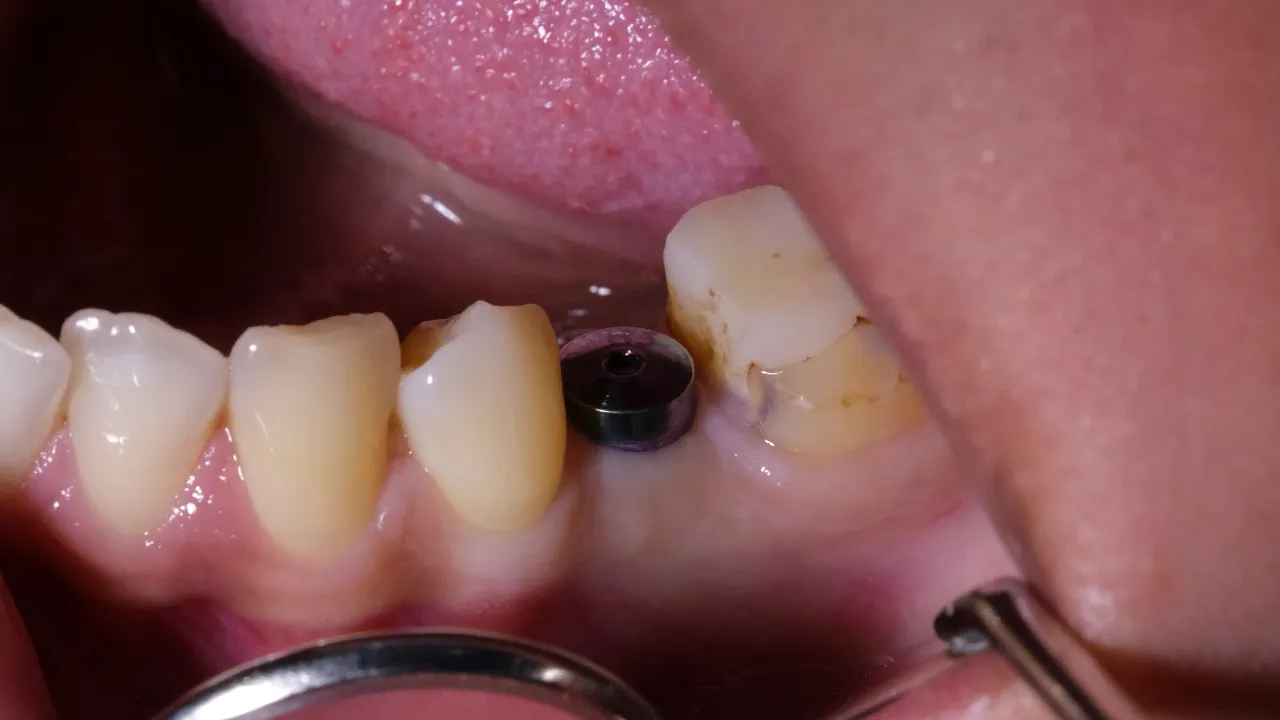
The dentist or oral surgeon normally uses antibiotics, anaesthetics, bone grafting agents and osseointegration stimulants for the whole process. Antibiotics are important drugs to prevent wound infection. It is usually given to dental patients after the procedure. Another essential drug for the implant process are anaesthetics such as lidocaine. Anaesthetics are injected to patients before the procedure to numb the area where the implant is going to be placed. It prevents the patient from feeling pain and discomfort during the course of the operation, allowing the dentist to work properly and effectively. There are situations when bone grafting substances are used in a single tooth implant, due to weak jawbone. Lastly, osseointegration agents are used to expedite the growth of connective tissues and bones around the implant. The success rate of single tooth implants has surmounted throughout the years. Studies show that most surviving single tooth implant procedures have a success rate of 95%. Further research states that the survival rate of dental implants is relatively higher than natural teeth. The average cost of a single tooth implant generally surmounts to £539.62. It usually costs lower in the United States which ranges from £2501.99 to £4169.99. There are insurance coverages in some countries that cover a portion of the implant cost. Dental patients must consider that the cost of a single tooth implant is expected to increase when supplemental operations or additional teeth are used. The discussion stated above is just a short illustration to know about What is Single Tooth Implant. It is important to have a thorough discussion with a licensed dentist about the advantages and disadvantages of the single tooth implant procedure to become totally prepared for the procedure beforehand.
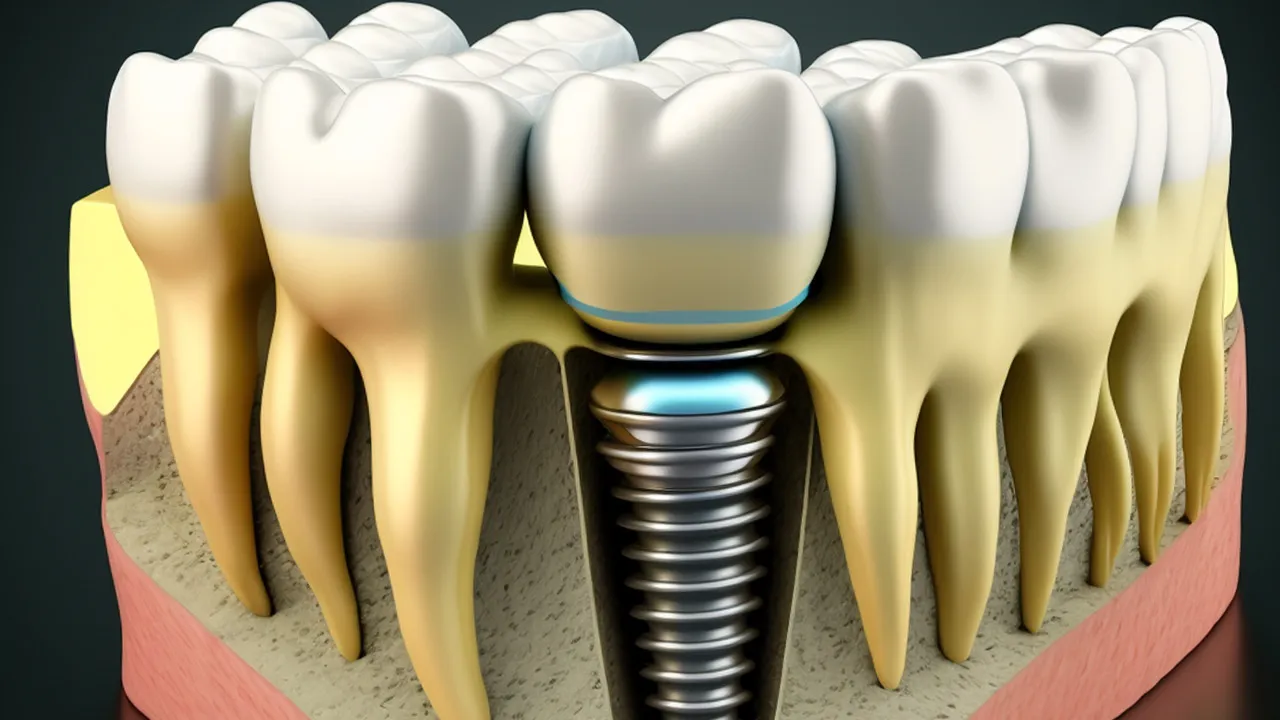
5. Implant-Supported Bridgework
The Implant-supported Bridgework is a type of dental implant which is derived from the traditional dental bridge. It uses screws, abutments, and artificial crowns just like most dental implants which are made from titanium too. The implant-supported bridgework appears more complex than regular dental bridges but it actually provides a firmer hold to both the jawbone and the artificial teeth. The traditional dental bridge is a type of dental treatment which uses a set of two or more artificial teeth fastened together to replace missing teeth in the upper and lower jawline. Dental pastes are used to attach the bridge on the person’s gum line which affects the quality of bridges in terms of stability and longevity in the jawline. Normal bridges depend on their neighbouring teeth as a support, while implant-supported bridges don’t. It is because the implant-supported bridgework, as the name suggests, uses titanium dental screws that are drilled through the jawbone acting as stable roots for the artificial teeth. These screws provide support to the bridge or the artificial teeth that are placed beside the natural teeth in the jawline. Implant-supported bridgework is way more secure and stable compared to standard bridges.
The implant-supported bridgework is recommended for dental patients who have lost more than one tooth in the same array and want to replace them all in one implant procedure. The drugs and chemicals used in the implant-supported bridgework are quite similar to other dental implant procedures. Some of these drugs are the anaesthetics, the antibiotics, the chemical agents for bone grafting, and the healing substances. The specific preferences of these drugs depend on the needs and choice of the patients. The sooner the dental patients get a serious discussion about the implant and the factors along with it, the better the results of the procedure is going to be. Studies show that the success rate of implant-supported bridge work has reached the scale of 95% through the years. However, it is still important to note that the success of the said implant requires the patients full cooperation and adherence to the dentists’ prescription. The costs of implant-supported implant varies on the different factors. The cost is expected to increase depending on the number of teeth being replaced, the type of materials being used, and the complexity of the case that the dental patient has. Implant-supported bridgeworks generally cost tens of thousands of euros which normally starts from £1170.43 to £5511.29. The said dental implant is sometimes not included on dental insurance coverages which is why it is necessary for patients to check them first with their insurance companies. The cost of implant-supported bridgework is undeniably higher than traditional bridges but it is a cost-effective option in the long run. The discussion stated above is just a short illustration to know about what is Dental Bridge. Dental patients are encouraged to have a thorough conversation with their dentist about the advantages and disadvantages of the said implant procedure to become totally prepared prior to the procedure schedule.
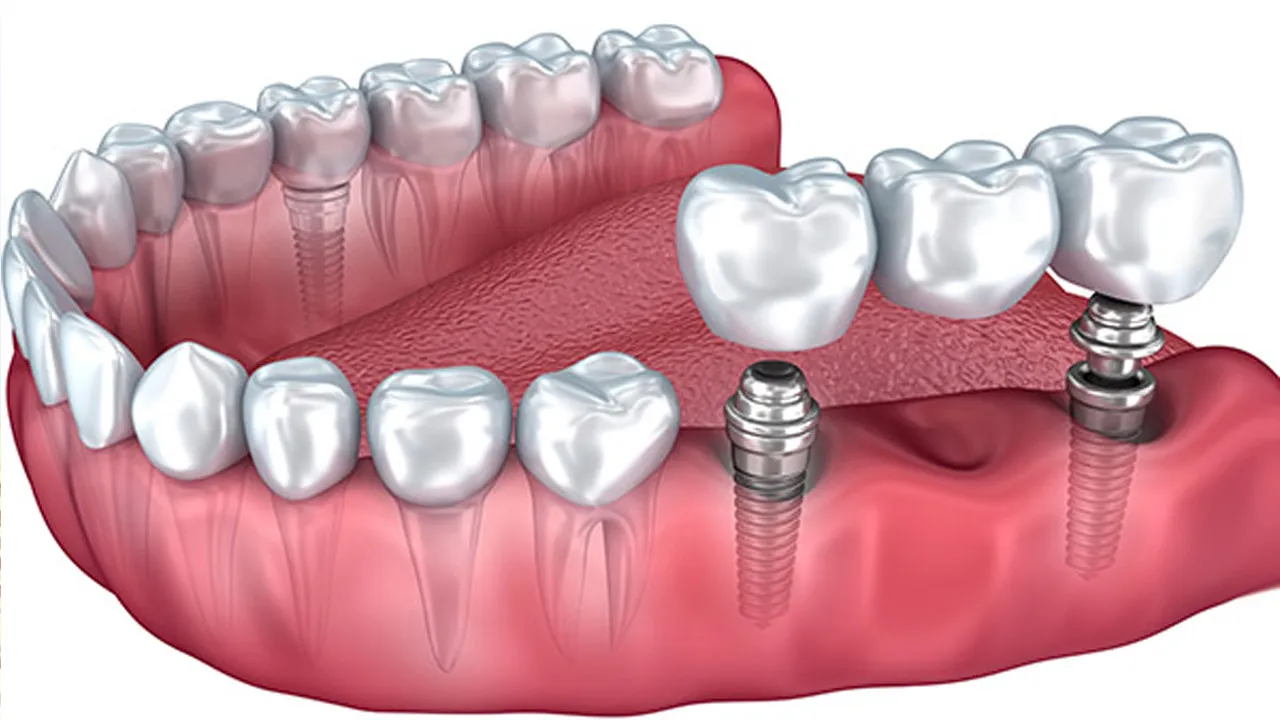
6. Implant-Supported Dentures
Implant-Supported Dentures is a kind of dental implant which is derived from a standard denture. It is composed with tiny parts which are made up of titanium, just like any other dental implants. The only distinction that the implant-supported dentures have against the conventional denture, is the fact that these kinds of dentures use implants or devices which are submerged deep down into a person's jawbone. Normal dentures don’t use narrow posts placed underneath the gum line making it susceptible to slipping and instability inside the mouth. They are more likely to shrink over time which leads to misfitting and later on discomfort. Dentures that are implant-supported have anchored abutments underneath which are connected to the dental posts drilled from the jawbone. Thus, allowing dental patients to smile with confidence. They are able to talk properly and enjoy eating any kind of food without agonising about their dentures. The typical implant-supported dentures usually have two dental grafts in place. However, dentists and oral surgeons suggest placing a complete number of dental implants on each tooth. The implant-supported dentures are recommended for patients with healthy jawbone for the procedure. A healthy immune system and gum tissue are necessary factors before setting the implant operation. Implant supported dentures are removable, in spite of the strong hold that it projects because of the drilled implants. They need to be detached from the jawbone for cleaning and maintenance to make sure that the gums and neighbouring teeth are in good condition. The chemical and drugs utilised in setting implant-supported dentures include anaesthetics, antibiotics, bone grafting agents, osseointegration stimulants, and soft tissue grafting substances. These substances help patients and oral professionals to come up with a successful implant process. The success rate of implant-supported dentures is undeniably high compared to the traditional dentures since they are attached more securely and properly in the jawbone. Its success rate rockets to 95% in general while traditional dentures have 75%-85%. Implant supported dentures usually cost much higher than traditional dentures as well. However, it still varies to the number of implants needed, the kind of implants utilised, and the difficulty of the patient's case. A complete set of implant-supported denture scales from £3022.59 to £15067.76. There are dental insurance companies which cover a portion of the total cost of implant-supported dentures, depending on which country the patients are. What has been discussed above is an illustration to help potential dental patients about what is Dental Dentures. Dental patients are deeply advised to set up a thorough conversation with their dentist about the implant-supported dentures and be totally prepared for it.
7. All-On-Four Dental Implants
The All-On-Four Dental implants are sometimes called “Full arch” implants. It is a dental treatment which is often used on patients who have no teeth at all either on the upper jaw or the lower one. It usually appears as an array of six teeth to replace a full arch of teeth in the jawline. The All-On-Four dental implants are made up of titanium alloy just like the rest of dental implants. It is characterised with 4 narrow titanium posts submerged beneath the jawbone having specific gaps from each other within the jawline. These long posts act as the foundation for the entire arch of teeth. The greatest advantage that the All-On-Four dental implants have against all other implants is that the procedure is done and completed within a day. Dental patients don’t have to schedule successive appointments to get the job done. They don't have to wait for a couple of months or weeks for each level of the procedure to be done. It is a one day process which lasts two hours. The All-On-Four dental implants do not require bone grafting at the same time because the dentist has the freedom to select the sturdiest parts of the jaw and place the posts there. The said implant is ideal for patients who are absolutely toothless. However, it requires that the patient is physically healthy before the dentist is going to schedule the procedure. The dentist is still expected to perform a series of physical examinations and laboratory tests to ensure that the patient is suitable for the operation. The replacement teeth used in the mentioned implant are allowed to be either removable or fixed. Patients are given the freedom to choose which type they prefer to be installed. Removable replacement teeth are not directly connected to the implant. They are connected to a special device instead, which allows them to be removed from the arch without the hassle. The artificial teeth are easily detached for cleaning and maintenance. It is a type of All-On-Four Dental implant which is recommended for patients having weak jawbones. Fixed replacement teeth on the other hand, are connected to the implant directly which means that it is not easily removed from its place. It is a type of All-On-Four Dental Implant which is recommended for patients who need full arch teeth replacement and when he/she has enough jawbone density. The chemicals and drugs applied for the procedure of All-On-Four Dental Implant include local anaesthetics, antibiotics, sedatives, and healing agents.
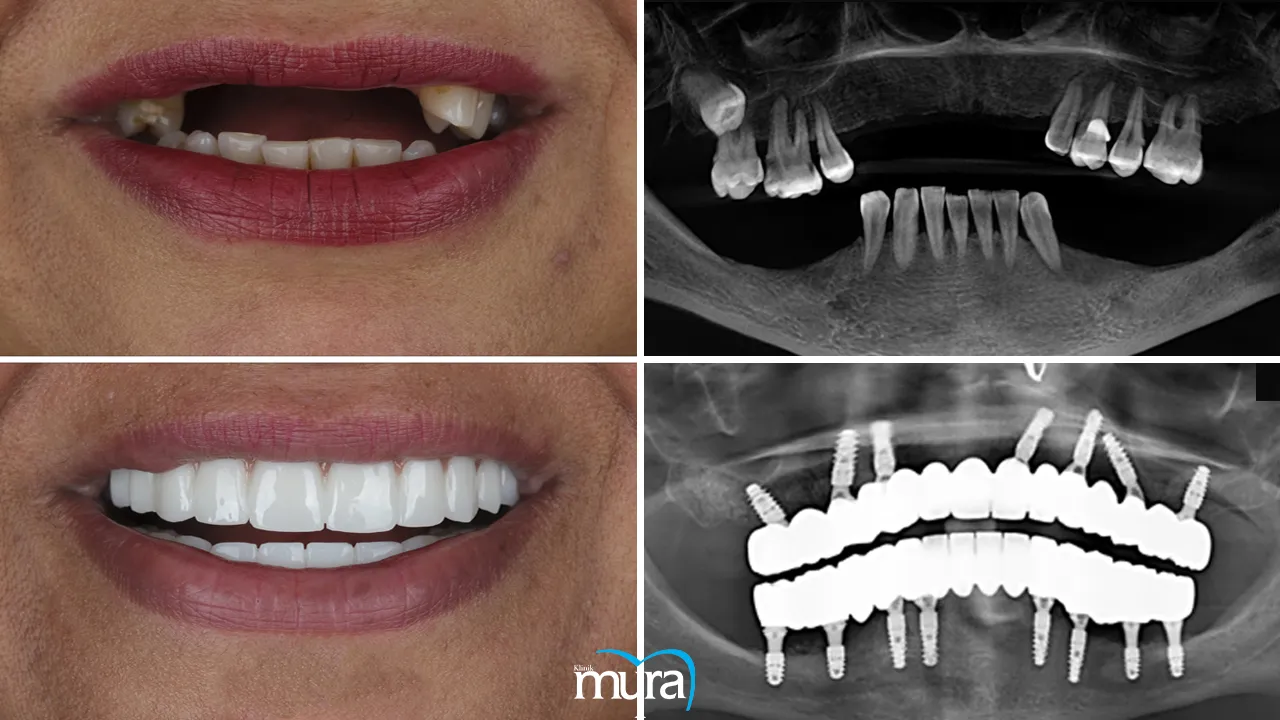 Studies show that the success rate of the All-On-Four Dental Implant rockets up to 99%. However, the success of the said implant procedure is directly proportional to the oral health condition and bone density of the patient. Patients with great oral condition and enough jawbone density are expected to experience great results. Whereas, patients who have a bad oral health, poor oral hygiene and weak jawbone density, are more likely to encounter various complications. The price that a patient needs to pay for an All-On-Four Dental Implant depends on different factors,but the average cost of a full arch All-On-Four Dental Implant in Turkey ranges from £3852.16 to £6238.19. The cost of All on 4 is relatively lower for a full arch teeth replacement consisting of 4-6 teeth. However, the price is made cheaper because the All-On-Four Dental Implant is done in a single session compared to other dental implant procedures which require a series of sessions with several months of interval. The said operation is quite advantageous because aside from its lowered costs, it serves as a permanent answer to patients’ tooth replacement problems.
Studies show that the success rate of the All-On-Four Dental Implant rockets up to 99%. However, the success of the said implant procedure is directly proportional to the oral health condition and bone density of the patient. Patients with great oral condition and enough jawbone density are expected to experience great results. Whereas, patients who have a bad oral health, poor oral hygiene and weak jawbone density, are more likely to encounter various complications. The price that a patient needs to pay for an All-On-Four Dental Implant depends on different factors,but the average cost of a full arch All-On-Four Dental Implant in Turkey ranges from £3852.16 to £6238.19. The cost of All on 4 is relatively lower for a full arch teeth replacement consisting of 4-6 teeth. However, the price is made cheaper because the All-On-Four Dental Implant is done in a single session compared to other dental implant procedures which require a series of sessions with several months of interval. The said operation is quite advantageous because aside from its lowered costs, it serves as a permanent answer to patients’ tooth replacement problems.
8. Transosteal Implants
The Transosteal Implant is another type of dental implant which is used specifically for the lower jawbone. It normally includes two narrow posts and a metal plate made of titanium. Transosteal implants are the least used of all types of dental implants. It is the type of dental implant that is not usually recommended by dentists and oral surgeons because of its complexity and extensiveness. The procedure of transosteal implant involves inserting a metal plate under the lower jawbone which requires a slit on the lower part of the chin. The small opening is utilised to position the metal plate into place using screws. The narrow posts are placed on both sides of the metal plate which acts as the support for the artificial teeth that are attached on top of them. However, these implants are rare and need to be created in line with the patient’s jawbone features such as height and width to ensure their quality and comfortability when worn. Each Transosteal implant costs really expensive because of it. Transosteal implant is the type of dental implant that is recommended for patients with missing teeth on the lower jaw. It must not be applied as a tooth replacement solution for loose teeth on the upper jaw. Transosteal implants are considered as life-long tooth replacement solutions which makes them unremovable. It has a complex structure and extensive procedure making it much more difficult to remove. The patients are injected with medical drugs to aid in the success and safety of the operation. Some of these medical drugs include, anaesthetics to prevent the patient from feeling pain and discomfort, sedative to calm the patients anxious behaviour, antibiotics to prevent infection from spreading and healing agents for faster recuperation of the wounds. The success rate of the Transosteal Implant according to studies, is 95%. It usually costs from £4852.16 to £12238.19 per arch or jaw.
9. Implant Overdentures
The Implant Overdenture is a type of dental implant that is more comfortable, functional, and boosts confidence compared to other dental implants. It is primarily made up of a full arch with a complete set of teeth and built in gum-like material. It has attached hollow posts beneath it where the dental implants are connected. The four dental implants are drilled into the patient's jawbone. It is where the hollow posts from the overdenture are joined. Implant overdentures are one of the best solutions for teeth replacement. It is the cheapest implant option among the other implant types. One of the benefits of implant overdentures is that they are more firm than regular dentures. Traditional overdentures use adhesives or oral pastes to fasten the denture and the patient’s jawline together. Implant overdenture uses dental implants that securely holds the denture in place. Patients don’t have to bother slipping dentures when eating, talking or posing for a photoshoot. Another benefit is that implant overdentures help the jawbones to remain healthy. Once the missing tooth is replaced or the full arch is already attached in the jawline, the jawline itself gets protected from future damage. Leaving the jawline empty or incomplete makes it susceptible to cuts, bruises and decay when consuming foods and beverages. The Implant overdenture is recommended for patients who have few teeth remaining in the arch and have healthy jawbone. The remaining teeth are removed to create a smooth and even surface for the dental implants. A temporary denture is placed on top of the newly drilled dental implants to serve as a protective barrier while the jawline is healing. The initial denture is removed after 3-6 months , and the permanent denture is placed afterwards. The chemicals and drugs used in the implant overdenture procedure are pretty similar to the previous dental implants. Professional dentists use anaesthetics, antibiotics, sedative, and healing agents to make the operation comfortable and successful. Research says that the success rate of implant overdenture ranges from 95% to 98%. However, it is still dependent on the way the patients take care of themselves and on the way they follow the dentist’s prescription. The cost of Implant overdenture procedure starts from £2502.26 to £5704.31. The discussion stated above is just a short illustration to know about What is Implant Overdentures. It is best to have dental patients schedule a thorough conversation with their dentist about the scope of the implant overdenture procedure to unfold questions to be able to prepare for the operation.
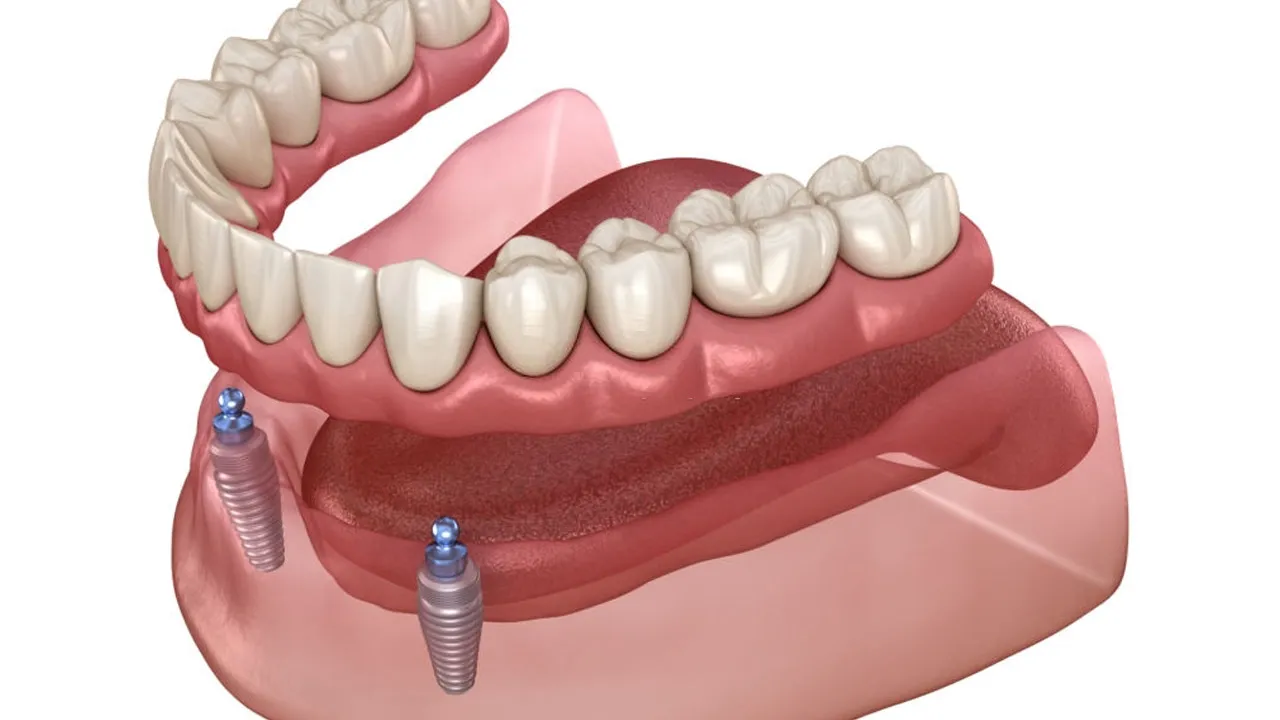
What to know more about Types of Dental Implant?
Dental implants are medical apparatus which are implanted beneath a patient’s jawbone. They are used to act as the supporting platform for artificial teeth placed in the mouth like dentures, bridges, and crowns. Dental implants are widely used around the world because it has provided better solutions for loose or removed teeth surpassing the abilities and results of traditional dental treatments. Dental implants come in various structures that perform specific roles for different dental needs. Some of the top dental implant procedures performed over the years are discussed above. The most common component element of dental implants is Titanium. It is an element proven to have durability and longevity. A lot of helpful devices have been incorporated with titanium to come up with stronger and durable products. Some of these products include dental implants.The process of embedding dental implants into the patients jawline starts with the Titanium posts. Titanium posts normally resemble a screw which are narrow and long enough to reach the jawbone. It has a hollow centre which is dedicated for the connection of an abutment device. Titanium posts are surgically drilled inside the patient’s jawbone to act as the solid foundation for the artificial teeth. An abutment device later placed at the top of it along the gumline to hold the crown or the artificial teeth in place. The crown is placed at the top of the abutment device which looks really similar to a natural tooth. These steps however are not done in one session for most types of dental implants. The professional dentist or oral surgeon requires a number of months to allow the bone and gums to heal before proceeding to the next paces. Dental implants have truly changed the course of dental treatment. They have brought a lot of benefits to the lives of every dental patient. One of these benefits is that dental implants act like natural teeth. They possess the same capabilities as natural teeth have. Dental patients are able to have the same chewing power again. They are able to brush their teeth without any worries and are able to smile with full confidence again. Another benefit that dental implants bring is that it lasts a lifetime. Traditional dental treatment normally lasts up to ten years or more but dental implants are lifelong. The presence of titanium in the implant device makes it super sturdy and ultra compatible with human anatomy unlike any other elements. Dental Implants fend off bone loss at the same time. The health of the jawbone is expected to decline if a loose tooth remains unreplaced. The volume of the bone area decreases to 75% within the 12 months of losing the teeth. Worst thing that happens is that bone deterioration carries on within the next few years. The technology that dental implants contain is able to stop deterioration and to restore the health of the jawbone and gumline. Dental implants promote stability for nearby teeth as well. Dental gaps or unreplaced teeth are the cause of crooked shifts and overlapping transitions of other teeth in the arch which affect one's chewing capacity and appearance. Dental implants allow the nearby teeth to be pulled back into their normal positions in the gumline, since there is no longer a gap or gaps beside them. Dental implants help in keeping a disease-free gum and in preventing untimely facial slumping as well. Having a complete set of teeth in the mouth leaves no room for unwanted bacteria build up. Dental implants stop unprecedented disintegration of the lower part of the face which makes a dental patient look older than her actual age. Dental patients have undeniably found an effective solution for their dental needs with Dental Treatment Implant. It is a helpful technology which is expected to improve more in the coming years.
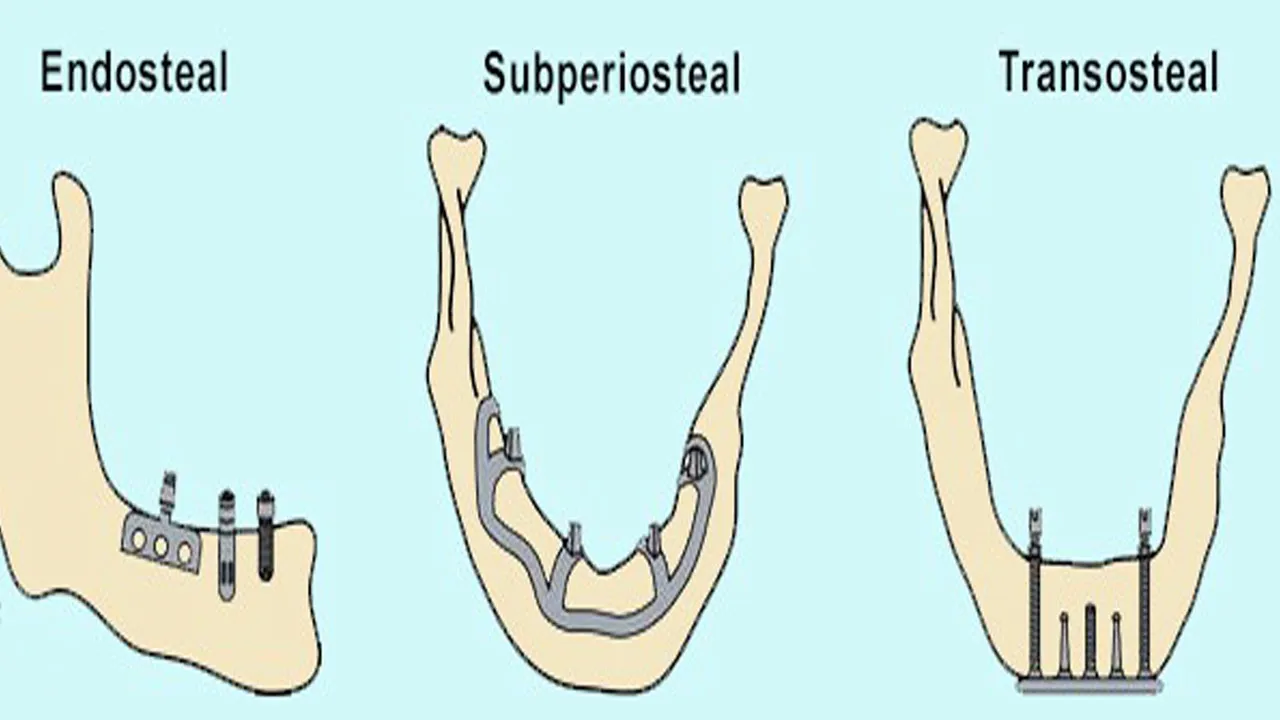
Which is the Most Used Type of Dental Implant?
The most used type of dental implants are the Endosteal Implants. Endosteal Implants involve a procedure that takes a little time to recuperate unlike most dental implants. They are stable, durable and lasting as well. Endosteal implants are not exclusive for a certain type of patients but rather suitable for most dental patients.The process of Endosteal implants starts with the drilling of the titanium posts deep into the patient’s jawbone. These posts are narrow and long to be able to perforate deep down the jawbone area. They serve as the foundation of the artificial teeth at the top. The artificial teeth or crown are later fitted on top of the titanium posts. Almost all dental patients are eligible to undergo the Endosteal implant procedure. It is appropriate for most dental patients as long as their jawbones are healthy and firm. Dental patients who have weak jawbones or low bone density are expected to undergo a different type of dental implant. However, they are welcome to request their dentist to administer bone grafting agents if they opt to pursue endosteal implants.
Which is the Safest Type of Dental Implants?
The safest type of dental implants are the Endosteal implants. Endosteal implants is considered the safest type of dental implants among the types discussed above because it has no excessive contradicting effects for most dental patients. Endosteal implants do not impose extensive criteria from patients who wish to avail the dental implant. The most important thing it requires is to have a healthy jawbone with enough density to make the foundation of the crown even stronger. The process of implanting an endosteal into the jawbone is quite simple. Most professional dentists or oral surgeons use anaesthetics to make the whole operation painless. The procedure commends by first having the dentist assess the oral viability of the patient. The initial placement starts once the patient is proven ready for the operation. The initial placement is the first stage of the procedure which involves injecting an anaesthetic drug in the target area. The gum is later opened after which to reveal the jawbone where a small hole is drilled into. The titanium post is placed right into the drilled hole and the gumline is sealed over the post. Patients are advised to follow appropriate oral hygiene habits after the first stage of the procedure. Antibiotics and pain relievers are prescribed to aid in the healing process. The abutment placement is the next stage for the said dental implant. The gum is opened once again to attach the abutment device into the titanium post. The abutment device serves as the second layer of the implant. It acts as the platform where the crown or the artificial tooth is connected. However, before resuming to the abutment placement, ossification must be thoroughly achieved. Ossification is the process where the jawbone grows and builds a firm hold of the dental implant. Another healing period must take place after the abutment stage. The crown or the artificial tooth is later positioned on top of the abutment device once the gums are totally healed. The artificial tooth in Endosteal implants is either removable or fixed. Dental patients have the freedom to decide which one type of crown they prefer. Removable crowns are detached from the mouth for cleaning and maintenance. On the other hand, fixed crowns are permanent and are not easily detached from the mouth. Removing them takes another dental procedure. The healing duration of the Endosteal implant procedure takes several months. Each stage requires an ample period of time to recuperate the wounds. The initial placement in endosteal implant procedure normally takes 2 to 6 months to heal the wounds and complete the ossification. The abutment stage is performed after the 6 month period. The placement of the crown happens after 2 weeks. There is about 7 months utmost before the endosteal implant is fully functional. Endosteal implant procedures generally take two oral surgeries before it is successful. However, there are instances when the abutment stage is skipped because the abutment device is already installed right after the placement of the titanium posts on the first stage.
Which is the Most Expensive Type of Dental Implants?
The most expensive type of Dental implants are the full-mouth dental implants, commonly known as implant-supported dentures. The cost of full-mouth dental implants starts from £2839.79 and rockets to £75082.97, depending on the difficulty of the case and the country where the surgery takes place. Full-mouth dental implants are undeniably the most expensive dental implant of all, since several teeth are incorporated in the denture. Each tooth usually costs between £451.38 and £5005.53. A complete set of artificial teeth in one single arch or array really costs much. Full mouth dental implants are stable and durable compared to traditional dentures. It is suitable for patients who have lost a lot of teeth in a single row. However, to carefully start the procedure for a full mouth dental implant, the dentist must remove the remaining teeth, which increases the total cost of the whole procedure. It is why the price of the said dental implant procedure is very expensive. It is expected to gain more popularity around the globe in the coming years due to its wonderful advantages.
What is the Average Healing Recovery After a Successful Dental Implant?
The healing recovery after a successful dental implant usually takes several months. The procedure for dental implant starts with the placement of the dental roots. The healing of the gums takes place within 2 to 6 months after the dental implant is embedded in the jawbone, during that stage. Another recuperation period is allotted after placing the abutment device. It usually takes 2 weeks to heal the wound. It takes seven to ten days after the crown or artificial teeth are placed at the top of the abutment device, that dental patients are already permitted to return to their usual diet. However, some patients who have a sensitive case than others are advised to continue with soft diet until six months.
What is the Life Expectancy of Dental Implants?
The life expectancy of Dental implants usually lasts for around 25 years or more compared to other dental treatments. The reason behind that is because dental implants make use of a powerful titanium technology that other dental solutions don't have. The titanium present in the dental implants relates harmoniously in a human's anatomy. It offers no excessive side effects to the patient and helps in the ossification. Life expectancy pertains to the period of time when a certain product, device or machine remains operational and usable. Dental implants have longer life expectancy because they are undeniably stronger and more durable unlike other dental solutions. However, the longevity of dental implants depends on some essential factors from the patient’s end. Some of these factors include oral hygiene habits, diet and lifestyle, and the location of the implant in the mouth. Healthy oral hygiene habits lead to prolonged lifespan of dental implants. Healthy oral hygiene habits include regular brushing of the teeth, flossing twice a day, and attending regular dental check up. Following these healthy habits prevents bacteria build up which causes further tooth decay and deteriorated gums. Diet and lifestyle is an important factor to consider as well. Patients are encouraged to consume healthy and nutritious meals and beverages that help strengthen the jawbone and gumline. Cigarette smoking and consuming alcohol are better avoided as well when having a dental implant. A stronger jawline and a healthier gum line result in a well preserved dental implant. Another factor which affects the life expectancy of dental implants is the location of the dental implant in the mouth. Most dental implants positioned at the back area of the mouth are often exposed to failure or have shorter life expectancy compared to those placed in the front. It is because the back area of the mouth receives and exerts a lot of pressure when consuming foods. They are used most of the time which makes them vulnerable to damage and worst, shorter life expectancy. . Dental implants are indeed game changers in the field of dental treatments. Nevertheless, dental patients are still encouraged to do their part during the healing process and be mindful of the Dental Implant Lifespan that they are able to benefit from by following the prescribed guidelines.
Is Subperiosteal Implant an alternative to Endosteal Implant?
Yes, subperiosteal implant becomes an alternative to Endosteal implant in cases when the patient doesn’t like the drilling process in the jawbone. Endosteal and subperiosteal are both commonly preferred dental implants. These implant devices are both affordable too. Subperiosteal implants do not involve drilling or creating holes in the jawbone. It is instead fixed on top of the jawbone under the gumline. Subperiosteal implants use a titanium metal frame instead of narrow screw-like titanium posts. However, they use hollow posts to serve as the foundation of the artificial teeth where they are attached. The titanium posts are not drilled into the jawbone to hold it in place, instead the gums do the work. The moment the gums grow around the metal frame and the posts, the crown or artificial teeth are secured to the poles. The Subperiosteal implant procedure is a little less intensive operation compared to endosteal implants’.
Are Dental Implants Permanent?
Yes, Dental implants are permanent. The presence of titanium in dental implants creates a huge advantage over the traditional dental treatments. They are more stable and more durable, most especially they last longer than regular dental devices. Studies say that dental devices last 25 years and more. However, there are various factors that affect the longevity of dental grafts. These factors are discussed above. Dental implants are categorised into two. They are either removable or fixed. Removable dental devices are designed for patients who want to perform an intensive regular cleaning and maintenance upon their dental implants away from the mouth. The fixed dental grafts, on the other hand, are not attached easily from the mouth. Dentists are not able to detach these implants from the mouth for regular cleaning and maintenance, they are performed while intact inside the mouth instead. It requires a separate process to remove fixed dental devices and is expected to cost differently as well.
Can I chew hard foods after a Dental Implant?
No, Dental Implant patients are advised to get rid of hard foods during the healing period of implant placement. Acidic, spicy, and sticky foods must be avoided as well as these types of foods cause imbalance in the mouth and damage to the gumline. Eating hard foods lead to various risks such as unrestrained bleeding, gum inflammation, dental infection, dental soreness and worst, total implant fiasco. The perfect time to get back eating the food that a patient wants is after the placement of the crowns or artificial teeth. The dental patients are given complete liberty to enjoy the foods that they crave once the crowns are placed. They are going to eat again, regardless of the fact that they have artificial teeth. That is one of the best advantages dental implants give. Dental implants are able to restore a patients' ability to process different types of foods normally, like nothing happened.
What is the Difference between Endosteal Implants and Subperiosteal Implants?
The difference between Endosteal and Subperiosteal implants lie in the specific location in the jawline where the dental device is situated. Endosteal indicates "in the bone," which perfectly captures its location within the jawbone. Endosteal devices require extensive drilling inside the jawbone, as previously mentioned. It has typically three parts: an abutment piece, a long, narrow post, and a crown. The term Subperiosteal contrarily means "on the bone," implying that the devices are installed on the top of the jawbone rather than inside it. Metal frames are utilised in subperiosteal devices, which are thrusted in the middle of the gum line and the jawbone. The short titanium posts are also used to secure the crown or improvised teeth. These little posts are planted in such a way that they protrude along the gumline. Subperiosteal implants often include metal frame and short titanium posts as well as other components.
